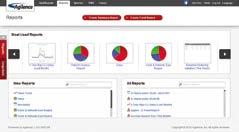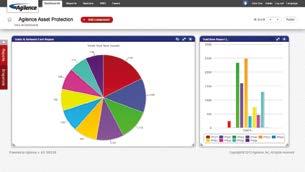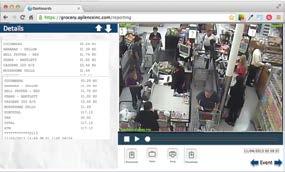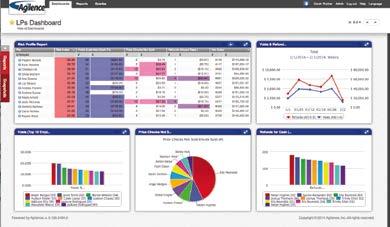
30 minute read
INTERVIEWING
Not Everyone Is Hannibal Lecter
When we think of psychopathic personalities, our minds likely wander to Hannibal Lecter, Jeffery Dahmer, John Wayne Gacy, Ted Bundy, or The Joker—killers and sexual predators without feelings or emotions like our own; preying on the innocent for their own sick reasons.
Psychopaths like many “illnesses” have a range from mild to severe and may be mixed with other personality disorders making them very complex individuals. These complex personalities are often grouped under the heading of “Antisocial Personality Disorder” in the Diagnostic and Statistical Manual of Mental Disorders, or are often simply referred to as psychopathy or sociopathy by the general public.
A sociopath is different by definition and usually refers to someone who habitually violates the law without learning from his past mistakes. The psychopath does this as well, but he also lacks the ability to feel emotions.
Over the years we have dealt with numerous psychopaths in both the public and private sectors. These people are remarkably different and need to be understood to develop successful strategies to deal with them. Although people toss the term “psychopath” around casually, they are probably classifying an individual as one, but it may simply be a person that has a milder antisocial personality with some emotional feelings. Only a qualified psychologist or psychiatrist can diagnose a personality disorder such as psychopathy.
Lying
While lying can be a component of psychopathy, the psychopath is very different from the compulsive liar. The compulsive liar lies out of habit, stretching the truth about things large and small. This behavior perhaps started in childhood as a defense mechanism for the individual’s low self-esteem. In fact, two of the key components we have seen over the years in these individuals are a general lack of success in life and low self-esteem.
The compulsive liar often impulsively lies even when it is foreseeable his deception will be detected, so unlike the psychopath there is no attempt to con or manipulate another. Rather than the con, these lies are habitual and impulsive with little thought to the long-term effects the lies have on the teller.
Sometimes these lies take on an aura of truth and success as they are told repeatedly, creating an imaginary image to overcome the individual’s low self-esteem. The result is a background, story, or alibi that will not stand up to the bright light of an investigation. The psychopath’s lies are more insidious—consciously woven to con or manipulate another.
by David E. Zulawski, CFI, CFE and Shane G. Sturman, CFI, CPP
Zulawski and Sturman are executives in the investigative and training firm of Wicklander-Zulawski & Associates (w-z.com). Zulawski is a senior partner and Sturman is president. Sturman is also a member of ASIS International’s Retail Loss Prevention Council. They can be reached at 800-222-7789 or via email at dzulawski@w-z.com and ssturman@w-z.com.
© 2014 Wicklander-Zulawski & Associates, Inc.
Psychopaths
Depending on the research, experts estimate psychopaths may make up two to three million people in the United States, which makes it possible that you may have met one. Men are more likely to become a psychopath than women, although female psychopaths do exist. Experts on psychopaths also estimate as much as 25 percent of the male prison population may be psychopaths.
Since the psychopath lacks feelings of guilt and remorse that provide a moral compass, it should not be surprising to find they have broken the law and wound up in prison. Plus, the psychopath lacks the ability to have emotional responses, thus even fear and anxiety are muted. Fear and anxiety are essential components of having a conscience, so it is no wonder the law is broken.
Not all psychopaths wind up in prison. One expert examined over 200 corporate executives and found 4 percent scored high enough on the psychopathy scale to be evaluated for it. Once we see the lack of guilt, the all-about-me attitude, and a devious, manipulative manner, it is easy to see how an organization can be led off track by a psychopathic leader playing fast and loose with the rules.
The corporate psychopath is generally outstanding at self-promotion and has a grandiose sense of self with a general disdain for other employees in the workplace. They are often described as selfish, self-centered, and irresponsible—treating people as if they were mere objects, rather than valued coworkers. These types of people often turn to fraud since they are charming, self-assured, and generally unfazed by the possibility of their dishonesty being discovered.
While many criminals may exhibit some of the traits of the psychopathic personality, what makes them different is the ability to feel guilt, emotional attachment, and empathy for others. They understand what it means to feel emotions, and at least partially experience the emotions themselves.
While the psychopath does not experience these emotional states, he is incredibly adept at recognizing another’s emotions
and then exploiting them. They can immediately assess a person and size them up quickly, which helps in the ultimate manipulation of the individual. Many of the researchers who study psychopaths describe them as chameleons, capable of changing masks to meet the needs of each person they speak with. They know the buttons to push to manipulate while being indifferent to the individual’s suffering, allowing them to use the person for their own needs.
The psychopath often has excellent communication skills, letting him jump into a conversation where others might fear to tread. They often have a grandiose sense of their own self and intelligence. What the psychopath lacks in content is covered by his flamboyant manner and use of industry-favored jargon. People listening to a psychopath tend to not drill down into the message, but are left impressed with the delivery of the words. Other psychopaths are socially inept and turn to threats and violence to get their way, often resulting in a visit to prison. This type of psychopath is generally screened out during the hiring process or quickly terminated for cause.
The psychopathic personality shows no loyalty to anyone other than himself. As a result their attachment to another is often only superficial, allowing him to change partners at will. Many psychopaths are also strongly narcissistic. To him, he is the sun and center of the universe while the rest of the human race revolves around his countenance.
Psychopaths would be unlikely to get along with one another since they would be similar types of personality—self-centered, aggressive, manipulative, and narcissistic. As a result if a psychopath has a partner, they are often within the normal range, but having elements of antisocial behavior.
The use of alcohol has a profound effect on the psychopath, prompting most to become loud, vulgar, and domineering. This may cause them to engage in jokes or pranks that may appear cruel or bizarre.
The psychopath also is a master manipulator, using other people as puppets to gain his way. As an antisocial personality, the psychopath often has a grandiose image of himself, which depending on his severity, may range from a passive to an exploitative individual. These individuals certainly are capable of articulating a society’s morals, but can never fully internalize them to their actions. These individuals also have no need to rationalize their behavior since they do not feel guilt for violating society’s moral requirements. They simply act out in a ruthless fashion to gain what they want regardless of its impact on others.
Some of borderline psychopathic individuals do not have the antisocial or narcissistic components to their personality. However, they still have a split that separates them from guilt and its resulting anxiety. These individuals may have some remorse and concerns for others that may come into play, but only after they have acted to gain what they wanted.
Not all psychopaths wind up in prison. One expert examined over 200 corporate executives and found 4 percent scored high enough on the psychopathy scale to be evaluated for it. Once we see the lack of guilt, the all-about-me attitude, and a devious manipulative manner, it is easy to see how an organization can be led off track by a psychopathic leader playing fast and loose with the rules.
Evaluating for Psychopathy
Dr. Robert Hare, who has worked extensively with psychopaths, has created a widely used scale to evaluate people for psychopathy. In his scale he examines a list of twenty criteria that is evaluated with a score of 0 if it doesn’t apply to the person, 1 if it partially applies, or 2 if it fully applies. Following is his full list: ■ Glibness and superficial charm ■ Grandiose sense of self-worth ■ Pathological lying ■ Cunning and manipulative ■ Lack of remorse ■ Emotional shallowness ■ Callousness and lack of empathy ■ Unwillingness to accept responsibility for actions ■ Tendency to boredom ■ Parasitic lifestyle ■ Lack of realistic long-term goals ■ Impulsivity ■ Irresponsibility ■ Lack of behavioral control ■ Behavioral problems in early life ■ Juvenile delinquency ■ Criminal versatility ■ History of parole violations ■ Multiple marriages ■ Promiscuous sexual behavior
A full-blown psychopath would score 40, while a score of 25–30 or more qualifies for a diagnosis of psychopathy in Hare’s scale. Scores between 21–29 are considered middle subjects who have many of the features of a psychopath, but do not fit all the criteria. A score under 21 is in the non-psychopathic range.
Psychopaths are extremely difficult people to interview. The emotional appeal we advocate be used on the average person is extremely unlikely to be successful. In our next column we will discuss interview and interrogation strategies that may be helpful in dealing with these personality types.
For those that might be interested in exploring the psychopathic personality further, we would suggest going to certifiedinterviewer.com for a list of reference material.
COVER FEATURE
PRODUCTS IN MOTION
KEEPING PACE WITH THE GLOBAL SUPPLY CHAIN
By Jacque Brittain, LPC, Editorial Director, Digital
The supply-chain network is a critical component of the retail machine. While many in retail may view the heart of retail as the interactions and events that happen within the store, this support system has always fueled the way. Through a complex web of processes and activity, a well-managed supply chain is absolutely essential to a successful retail operation.
Merchandise doesn’t magically appear on the shelves of our stores and into the hands of our customers. When we consider that every single piece of retail merchandise must in some way pass through the supply-chain network, it’s easy to see the need to implement appropriate controls and protect our interests as product moves throughout the network and, ultimately, makes its way to our customers.
For many seasoned loss prevention professionals, the importance of sound supply-chain policies and practices is nothing new. However, expanding our knowledge and understanding of this essential aspect of the retail enterprise is something that we all can benefit from, and puts us on common ground as the industry moves forward.
The role of loss prevention across the supply chain has grown considerably in recent years, and continues to expand even today. The advancements in technology, the evolution of e-commerce and Omni-channel retailing, and the mounting sophistication of retail crime will continue to revolutionize our role throughout the supply-chain network.
As this role grows more complex, our approach to the entire process must evolve as well. As a critical element of our overall programs, this function is much more sophisticated than making sure that receiving doors are locked, cargo is secured, and logs are signed. That image and mentality must change to reflect the true nature of the management process within the supply chain. We’ll begin our in-depth look at supply-chain issues with a high-level overview of some key supply-chain network fundamentals to set the groundwork for future articles.
Managing a Process
Supply-chain management encompasses the planning and management of the many activities involved in sourcing, procurement, conversion, and logistics management for the business. It involves planning and processing orders; handling, transporting and storing the products purchased, processed and/or distributed; and managing the inventory of goods in an efficient and coordinated manner. The primary objective is to fulfill business demands through the most efficient use of resources. By maintaining effective control over inventories and distribution, the supply chain seeks to match and manage supply with demand to reduce costs, improve sales, and enhance company profitability.
Efficient and effective supply-chain networks are necessary to successfully compete in the global retail market. It then rests on the loss prevention professional to take the necessary steps to gain a better understanding of the overall supply-chain process and how the process impacts the business so that we can effectively support shrink reduction and profit-enhancement efforts.
In terms of understanding, even the term “supply chain” can be viewed as a misnomer. This is not merely a seamless link of interconnected, proportional pieces that takes us from a point of origin and leads to a single ending destination. It is a sophisticated, interdependent network of positions, processes, facilities, functions, responsibilities, tasks, transport, and technology that all culminates with delivering products and services to our customers.
From a loss prevention management perspective, our attentions must then focus on disruptive risk. As described by one industry leader, “Assuming the enterprise has taken the necessary precautions to ensure product quality, integrity, and safety, the primary risk to any organization posed by the supply network is disruption. Any disruption in production or delivery will result in potential lost sales, decreased revenue, margin erosion, and profit loss.” These risks can exist at each origin location, at each intermediate location through which the product travels, and along each transportation link between points.
Companies must design operational plans that will serve to identify potential threats; evaluate how, when, and where they may occur; develop effective approaches to mitigate losses; and build programs that improve efficiency and business recovery. Theft is certainly a primary consideration, but specific risks will vary depending on a variety of factors specific to the unique
The role of loss prevention across the supply chain has grown considerably in recent years, and continues to expand even today. The advancements in technology, the evolution of e-commerce and Omni-channel retailing, and the mounting sophistication of retail crime will continue to revolutionize our role throughout the supply-chain network.

supply-chain network. The potential risks must be identified and analyzed at each point along the network, building the plan that serves as the cornerstone of supply-chain resiliency.
But where do we start? What are our greatest risks? What are the primary factors that will influence the success of the plan? How do we determine where to focus our attention and resources? These are just some of the questions facing our industry leaders as we access the risks and construct our plans.
Where Does Your Supply Network Begin?
Clearly, the first step of this process is to secure the products that we wish to offer for sale. As retailers we want to offer quality products, obtain the appropriate quantities of product balanced with customer demand, get those products in the hands of our customers as quickly as possible, and manage the entire operation through the most economical and cost-effective means. Where the product is coming from can significantly impact each of these key management variables.
The point of origination for our products could involve a vast array of sources from across the world, and through different product channels depending on any number of factors that might influence supply, demand, purchasing, and product movement. Does the product have to pass through customs? If the products are manufactured internationally, are the products flown in or does the product pass through our ports system? Are climate or weather issues a consideration in securing these goods? Are there political, labor, regulatory, or other business considerations?
There are a host of issues that must be managed to simply secure the products that we wish to offer for sale, each of which can significantly impact the success and profitability of the entire business, and each of which can pose potential points of risk. Even before the product is owned, such risks can impact supply, product costs, and other factors that can directly influence the business.
Yet while the point of origin is important in setting a foundation, it is the point where we establish ownership that is a critical determination. This not only establishes the right of proprietorship, but also the assumption of responsibility for the products. With the current complexity of the world trade market, the actual point where we assume ownership of products can be determined in many different ways, and at different points depending on specific contract negotiations and a number of other factors.
Ownership determination will vary from company to company and in some instances may even vary depending on the particular product. But at the point where we assume ownership, are we getting what we paid for? Is it the correct quantity? Is it the correct product? Is it the correct price?
International Security Concerns
Another primary point of risk is found when goods cross international

I think it’s time to fight our sh rink with the strongest possible weapon.
The numbers aren’t good, team. Our shrink We’re going to attack back using Alpha’s is through the roof and our high-theft 2 Alarm Attack Spider Wrap® . There merchandise is under attack daily. have been some amazing changes – Notice how much smaller the body is? It’s perfect for merchandising! but we can’t lock everything up - that’s Is that a push a death wish to sales! button cable Yep. And the release? locking mechanism is stronger than ever.
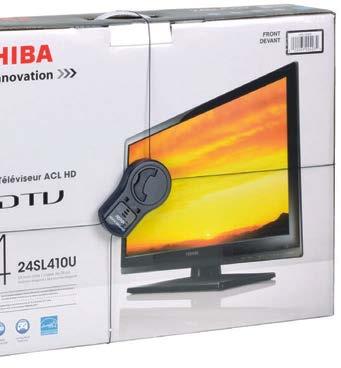
Add the new XL Spider Wrap® to your arsenal of super powers to defeat shrink! Fully retractable, aircraft grade cables expand to protect large packaged merchandise, including most 60” flat screen TVs. You’ll be amazed! Find out more about the XL Spider Wrap on alphaworld.com or call 888.257.4272.
But here’s where it really shines. Did you see how fast I put it on and took it off? It’s 66% faster than the previous version. That’s some super time and motion savings! That is fast, Now we have the power we need to defeat those vi llainous thi eves an d take control over ou r merchandise availabi lity!
RESOURCES
STORE DISTRIBUTION CENTER BUYERS
FACTORY
COMPONENTS STORE

ASSEMBLY
GLOBAL SUPPLY CHAIN
borders. Customs is responsible for controlling the flow of goods into and out of a country. Generally speaking, imported goods may not legally enter the U.S. until Customs and Border Protection has authorized delivery of the goods.
Officers may inspect cargo before it is loaded onto vessels at a foreign port destined for the US, while in transit, and at the first port of entry where the goods arrive. Inspectors may board ships, planes, rail cars, and trucks in order to thoroughly inspect shipments. The goal is to achieve a sufficient level of security without jeopardizing the efficient flow of legitimate commercial trade at the border.
Without debate the process is absolutely critical for many reasons. However, there are several potential challenges that can result from the inspections process. Inspections can cause substantial delays, product damage, spoilage of perishable items, and compromised shipment integrity that may lead to other loss prevention concerns. Transportation costs can increase when containers sit at the ports waiting to be cleared. Regardless of the circumstances there are costs, and risks, and protocols that must be managed. If the process is not managed properly our risks increase, leading to shrink concerns, lost sales, lower profits, and customer service issues.
C-TPAT
Unfortunately, some risks extend beyond product loss, theft, damage, or like issues, and carry the potential to create much more impactful considerations. The Customs-Trade Partnership Against Terrorism (C-TPAT) is a voluntary government-business initiative designed to build cooperative relationships that strengthen and improve both international supply chain and US border security.
The C-TPAT initiative asks businesses to ensure the integrity of their security practices and communicate similar guidelines to their business partners throughout the international supply chain. These principles have been adopted by the World Customs Organization and the international trade community, and similar programs are being developed and implemented worldwide. All ultimately have the save primary goal—to stop abuses of commercial trading lanes by terrorists and others who seek to corrupt the process.
The premise of C-TPAT is fairly simple—if a company has well-conceived and appropriate internal controls in place, they can enhance the likelihood that their products will arrive on time, intact, and without dangerous or unwanted goods substituted for the products that they expected to receive. This requires stringent internal controls regarding facilities, personnel, supply-chain procedures, computer systems, and other critical functions not only at US facilities, but all over the world. Importers are expected to partner with foreign suppliers and worldwide business partners to secure their supply chain and ensure that internal controls are adopted and implemented. (To read more about C-TPAT, see “Securing the Supply Chain Against Terrorism” in the November-December 2002 issue at LPportal.com.)
Risks In-Transit
The temptation for thieves to attack goods in-transit dates back to the days of piracy and highwaymen. The reason is simple—goods in-transit are the most vulnerable to predation. Retail merchandise moves fairly anonymously across the nation’s roads, rails and highways, through jurisdictions with varying resources and differing abilities and/or willingness to prosecute if and when individuals are apprehended. As a result cargo-theft incidents are often less likely to be given high priority when compared to many other types of crimes.
Deterring these losses therefore mandates attention to security and loss prevention practices, strong operational
controls, cooperation among participants in the supply chain, and a variety of investments in safeguarding cargo. But it also requires enhanced awareness. For retailers moving goods attractive to thieves, paying attention to in-transit product and loss prevention management should be a fundamental and daily part of doing business. This isn’t as simple as “a box falling off the back of a truck,” and shouldn’t be perceived that way. Such incidents can be highly sophisticated operations that can be dangerous as well as financially devastating.
As the supply chain continues to grow more complex, so does the criminal element that leaches off of our legitimate business. One of the biggest challenges involves organized retail crime (ORC) and the potential disruption that can result. ORC incidents can occur at any point along the supply chain, whether at the point of manufacture, on loading docks, rail stations, distribution centers, or potentially anywhere along the transportation route. Thefts can range from smaller, subtle quantities that are part of larger shipments to aggressive, armed hijackings involving entire truckloads of merchandise.
ORC groups will take advantage of practically any opportunity to steal product that is vulnerable to theft and will potentially produce large profits. Thefts are often preplanned, highly coordinated, and well-executed. Many operations are managed to the point that they know exactly what they are targeting and have the ability to move, reload, and redistribute stolen goods within hours. The stolen goods may be moved quickly to a warehouse, off-loaded, repackaged, re-manifested, and placed on another vehicle—often before the theft is discovered by the company or reported to the appropriate authorities.
In-Transit Methods
Members of organized groups have for decades stolen full and partial shipments and/or loaded trucks while they were in transit. These incidents can occur in a number of different ways. For example, many hijacking incidents occur while a driver is away from the truck, such as at dinner or on a break, and thieves simply break into the vehicle and drive off with the goods. In other instances, hijackers will target a vehicle and forcibly enter the cab while the driver is in the vehicle. Freeway on and off-ramps, rest stops, and other common stopping points are particularly dangerous.
Another common method is to coerce the driver into making an unplanned stop by having someone gain the driver’s attention while they’re driving. This individual may falsely inform the driver that something is wrong with their vehicle or may use other persuasive tactics to convince the driver to stop the vehicle. Once the driver pulls over and the vehicle stops, accomplices arrive to steal the rig.
A technique favored by ORC groups targeting trucks or containers loaded with high-tech and high-value merchandise is the “grab and run.” Often traveling in vans or similar vehicles, they follow a
This upcoming shopping season, do you have the NEED FOR SPEED?
Our new Counterpoint Intelligent Deactivator will keep your checkout lines moving faster and your customers smiling.
Make this a happy holiday for you and all your shoppers... and your merchandise.

Merchandise doesn’t magically appear on the shelves of our stores and into the hands of our customers. When we consider that every single piece of retail merchandise must in some way pass through the supply-chain network, it’s easy to see the need to implement appropriate controls and protect our interests as product moves throughout the network and, ultimately, makes its way to our customers.
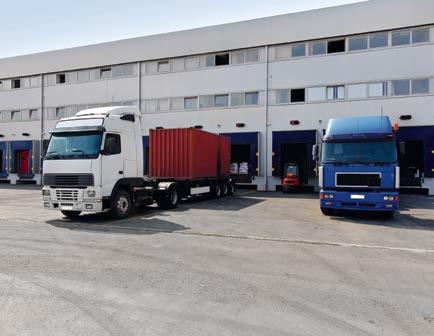
targeted vehicle, waiting for the vehicle to stop. Once the rig stops, several individuals will forcibly break into the cargo area and off-load as much product as they can. This is also a common technique used when employee vehicles are used to transport valuable goods, such as jewelry, from one store to another.
Naturally, deception is another common method. Thieves may tamper with trailer/carton seals and/or locks in order to conceal trailer break-ins, or tamper directly with the container or trailer to commit these thefts. Leakage incidents may involve the theft of entire cartons, or removing desired product from within a carton and resealing the packaging to attempt to conceal the theft. ORC groups have even used individuals that present themselves as legitimate drivers at shipping facilities, using counterfeit paperwork or even electronic shipment information in order to gain access to and make off with valuable loads.
Effective strategies must be developed that are well-planned; combining the latest advancements in technology with industry-best practices, robust security procedures, and fundamental loss prevention methodologies. Such practices would include enhanced awareness efforts, improved response, advanced information and communication management, safety practices, employee screening programs, and robust training programs that provide necessary and appropriate information to our employees at every step along the way.
Distribution Centers
Distribution Centers are often viewed as the foundation of the supply-chain network, establishing a centralized location from which we can stock and distribute products to the stores or directly to our customers. While basic designs and functions may be similar, each facility is also vastly unique based on the organization, the types of products, and the special needs of the business. These complex operations can house volumes of merchandise, equipment, supplies, and employees in order to meet and maintain our primary business objectives.
While often viewed as simply a project-specific, labor-intensive venture, the actual mission of the distribution center operation is vitally strategic and tactically calculated. Coordinating the concurrent needs of the stores, our customers, suppliers, buyers, inventory control, transportation systems, and other services and service providers is a formidable task to keep product moving efficiently and contributing to our companies’ profits.
“Today’s distribution center can house thousands of SKUs, with some of the larger facilities managing the inventory for several hundred stores in a single location,” says one industry expert. “Teams must ensure the accountability of the freight at all times throughout the product cycle, to include accurate receiving protocols, proper storage of the freight in its designated location, cycle counting, and order pulling and shipping of merchandise to the correct location.”
This isn’t simply an exercise in moving boxes from one site to another. This is about product flow and speed to market, driving replenishment, maximizing sales, and maintaining quality customer service while minimizing losses, damage, and theft of goods. All of this requires cutting-edge loss prevention management, with progressive programs and proactive strategies that build on modern technologies and contemporary supply-chain management strategies and design. Every function, every process, and every practice must be continuously reviewed and reevaluated to help control costs and maximize efficiency.
Depending on the particular company, a retailer may purchase and sell tens of thousands of products. Goods typically arrive in bulk and are stored in the distribution center until needed by the retail location. Products are then retrieved and assembled into shipments before being forwarded to stores or directly to customers. And throughout every stage of the process, there are opportunities for loss.
The efficient processing of goods through the distribution center plays an essential role for the entire business operation. Every facility must be specifically designed to provide for the safest, fastest, most secure, most efficient and cost-effective control and movement of our retail products, and our loss prevention efforts must complement the process. Vulnerabilities extend well beyond basic physical security measures and access controls, and we must show the same proactive, cooperative insights that have helped to build our success in other areas of the business.
DC Risks
Identifying the potential source of theft risks within a distribution facility are typically not hard to determine. Access to the facility is managed. Activities within the facility are controlled. In the stores there is public access to the building. However, this is clearly not the case in the DC environment. In plain terms the most likely way for theft activity to be successful in our distribution centers is if employees are involved.
Often the greatest opportunities for losses in the distribution center

Actual images
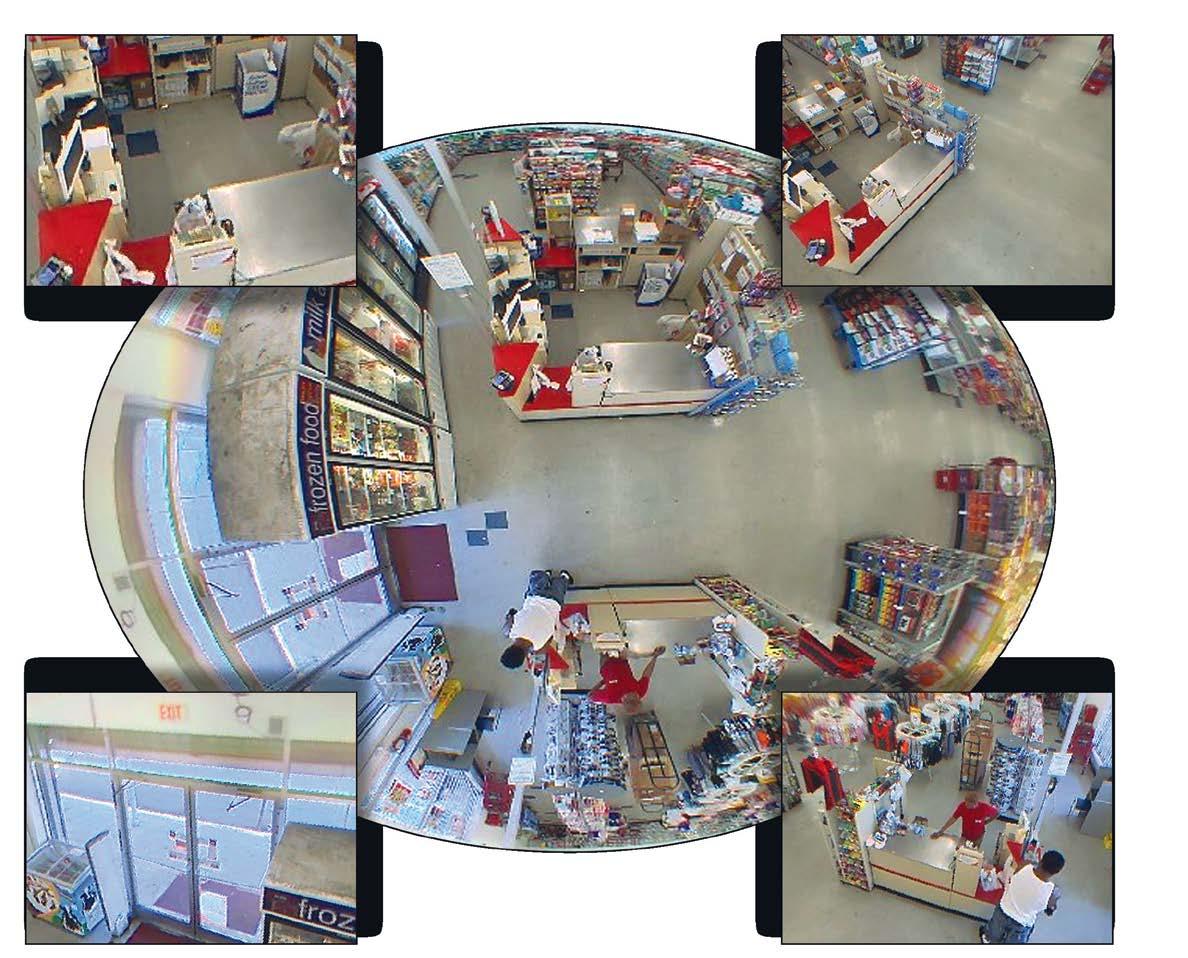
Trade your fisheye for a bird’s eye.
Say farewell to poor resolution at the image periphery. Say hello to Sony’s SNC-HM662. Tightly integrating Sony’s 5 megapixel Emxor® CMOS sensor to an ImmerVision Enables® Panomorph™ 360° lens that enables up to 30 percent more pixels than a traditional fisheye lens, the camera minimizes blind spots. You’re also free to create multiple view windows with full electronic pan, tilt and zoom in real time or after the fact. So you can track, detect and analyze as never before. Experience the SNC-HM662 hemispheric view camera for yourself. And leave the fisheyes to the fish.
Learn the Five Essentials of Surveillance Cameras at sony.com/security.


continued from page 20
involve collusion between multiple parties—especially between drivers and the employees that load and unload trailers. Merchandise within the distribution center is at its greatest risk when trucks are being loaded and unloaded, which is a time frame that is particularly chaotic with individuals largely concerned with loading or unloading the trailer and getting the truck away from the dock. With attentions typically focused on labor and speed, employee interest can be diverted, leading to enhanced risks and greater opportunity.
The possible infiltration of our associates by organized criminal groups is also a threat within the DC environment. Perpetrators may gain access through temporary agencies when services are needed, such as during peak selling seasons. Employees with ORC ties may simply hire into the company in order to gain access to merchandise, information, and opportunity. Existing employees may be recruited by ORC operations to participate in illicit activities. Individuals that hired in with honest intentions may also observe and exploit opportunity, and make poor life decisions as a result.
While the direct theft of merchandise is an ongoing concern, the theft or disclosure of information can be just as problematic. Shipment and product information, seals and seal sequences, delivery schedules, truck routes, and other relevant information can be divulged to assist with hijackings and similar operations. Blank forms may be pilfered to create fraudulent documents. Alarm information, CCTV placement, internal layouts, rosters, schedules and shift changes, and other important operational information may be shared or exposed. Additional actions may include intentionally damaging or blocking CCTV or other security equipment, removing batteries from alarmed doors, leaving outside doors or security enclosures opened or unlocked, purposeful distractions, or simply “looking the other way” when the need arrives. Any and all opportunities may be exploited depending on the complexity and motivations of those involved.
The supply-chain network demands control to drive efficiency and productivity. Setting the tone early and often by maintaining direction and enforcing rules sends an important message and helps establish a culture of safety, control, and honesty. This is why the fundamental aspects of loss prevention provide such an important barometer of program success.
Establishing a Culture
The supply-chain network demands control to drive efficiency and productivity. Setting the tone early and often by maintaining direction and enforcing rules sends an important message and helps establish a culture of safety, control, and honesty. This is why the fundamental aspects of loss prevention provide such an important barometer of program success. Failure to control basic support functions is an indicator of greater opportunities which in turn can significantly influence the scale of involvement throughout the entire network.
Creating and implementing policies, practices, and procedures that serve to establish workable controls is an important step. But this must be coupled with appropriate resources to support the control measures as necessary, to include adequate attention and staffing. Programs must be regularly reviewed and monitored to ensure effectiveness, efficiency, relevance, and application. Most importantly, this must have the support of all levels of management, to include implementation, maintenance, enforcement, and resolution.
Finally, as an industry we must improve our knowledge, awareness, and education regarding the entire supply-chain network. Programs such as the supply-chain course within the LPC certification coursework provide a tremendous resource. But we must also open more effective channels of communication with subject-matter experts, especially those within our own organizations, to gain a more comprehensive understanding of this critical aspect of the retail business.
As emphasized by one industry leader, “Within our industry there is a tendency to place the roles of loss prevention in the stores and in the supply chain in very different buckets. However, closer inspection defiantly puts things into a different perspective, as these roles are often much more similar than they are different. I would encourage each of you to pause for a moment and reflect on some of your dealings with your fellow loss prevention peers who work in the supply chain. If you haven’t already done so, take some time and get to learn more about this aspect of the business. If possible, look for opportunities to do some cross-training in these partner departments. Make the effort to expand your professional horizons. These lessons will go a long way in building relationships and adding value your organization and your future.”
Many of the topics discussed here merely scratch the surface of the complex challenges faced within the supply-chain network. There are a broad scope of opportunities for us to explore, many of which haven’t been addressed in our brief overview. Look for more in-depth articles from LP Magazine in the coming months.
For some this may open the doors of opportunity that lie within the supply chain for growth and development. For others it may serve as a simple reminder of a side of the business that doesn’t always hold our full attention. For all of us, it should serve as a notice that the role of loss prevention is expanding, and we have a definitive responsibility to keep pace.

